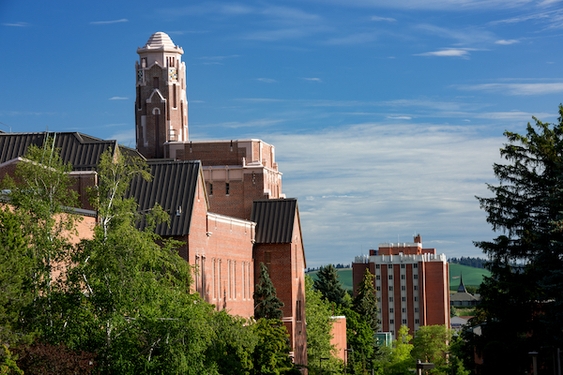Every student remembers the day he or she got accepted into college; it’s a moment of pure bliss. Usually, your parents are just as ecstatic as you are, but in my case, my parents didn’t celebrate. Instead, they got mad.
Unfortunately, in the Persian community, not many understand the concept of “going off to college.” So, I had two options: I could the attend the universities in my area that would allow me to live at home while commuting to school, or I could go to a community college for two years until I was free to attend whichever college my heart desired. Since I wasn’t interested in any of the universities in my area, I chose the latter option.
I was horrified when I realized that after all the hours and money I spent on SAT tutors, college applications, personal statements and AP classes, I was stuck at a community college. We’ve all heard the horror stories about students being stuck at a community college for more than two years, and I didn't want that to be me. But, I got over it and figured out a game plan to transfer to a different school.
I quickly learned that picking the right classes for the school you want to transfer to is difficult. At community college, it's sometimes challenging to find people and resources to help you transfer to a four-year school. However, the most important thing to remember about transferring is this: You need to know a) which classes you need to take, b) how you can sign up for those prerequisite classes before they fill up and c) how many credits you need based on the different schools and special programs you want to attend.
Here’s how you can make your goal of transferring to your dream school come true:
1. Get an early class enrollment date, so you can enroll in a class you need for transferring before it fills up.
My community college, Santa Monica College, has more than 30,000 students, which means registering for a class is basically impossible. The later my enrollment date, the less likely it is that I’ll get the class I want to enroll in. To transfer on time, I applied for my school’s Scholars Program, which gives students priority enrollment. I got in, and the higher I kept my grades, the better my enrollment date.
Programs such as this one also have special connections with various universities, which can increase your chances of being accepted.
2. Check out helpful transferring websites.
If you’re like me and have a four-year school and major already planned out, www.assist.org can be a great resource. Once you enter the community college you're currently attending, the school you're planning to attend and your major, the site will give you a list of the prerequisite classes that school requires and which ones are available at your community college for you to take.
3. Your counselor is your friend.
Visit your counselor, and ask questions. Get help. It’s not easy doing everything on your own, so go to a counselor before you choose classes. Every school is different, and they’ll let you know which prerequisite classes are best for you.
4. Follow the standard General Ed plan.
Every community college has a General Ed plan you can follow that almost every public university in your area accepts. Intertwine that plan with any other you might have so you’ll have a wider variety of schools to apply to.
5. Don’t take classes with only one four-year school in mind.
It’s easy to enter community college, pick one school and stay on that plan, but things change, and you might end up not wanting to go to that school—or you might not get in. If you take all of the classes required for only one school, you might not have enough credits to get accepted into another school. Make sure you take as many credits and prerequisite classes you can that will overlap at other colleges and universities, private and public, and in state and out of state. It’s better to be safe than sorry.
6. If you can, visit the counseling offices the schools you want to apply to.
Counselors at the universities you want to apply to can be very helpful. After all, these counselors know what their schools’ admissions office is looking for in transfer students. They’ll tell you which classes to take, what the average GPA for accepted students is and how many credits you need. Don’t just rely on that school’s website, because they can be very vague.
7. Attend transfer seminars.
Most community colleges offer transfer seminars that provide vital information on the right classes to take for transferring. This is a resource you do not want to pass up.
It’s important to pick a plan and stay on track. It’s easy to become too comfortable in community college and stray from your original goal. By following these steps, you can ensure that you’re not wasting any time.












